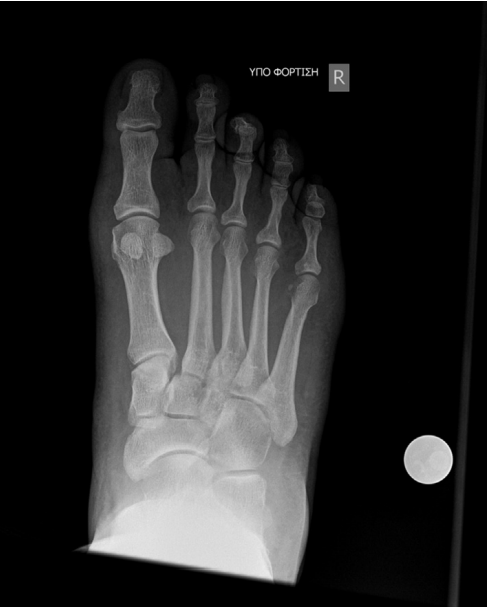Objective: The aim of this systematic review was to present the outcome of Lisfranc joint injuries treated with closed reduction and screw percutaneous fixation.
Methods: We searched in Pubmed and Google Scholar Databases for articles regarding screw percutaneous fixation of Lisfranc injuries. Seven studies in total were found to be compatible to our search, according to PRISMA guidelines. Four of those met the criteria of the review and they were included in the meta-analysis. A total number of 106 patients were separated into five groups according to the type of injury and the mean AOFAS score of each group was calculated. Cases in which percutaneous fixation was converted to open treatment due to poor reduction were not included in the study. In addition we compared the outcome score between types of injury according to Myerson classification as well as between purely ligamentous and osseoligamentous injuries. The characteristics of all seven selected studies, such as kind of screw used for fixation, post operative protocol, complications and outcome are mentioned as well.
Results: Average AOFAS score was 86,2 for type A, 87,54 for type B, and 85 for type C injuries respectively. In pure dislocation group the average AOFAS score was 86,43 and in fracture dislocation group was 87,36. Good to excellent outcome can be expected in patients with different types of injury according to Myerson classification following percutaneous fixation of lisfranc joint injury. Patients with type B injury or a fracture dislocation injury might have better outcome, although this difference was not found to be statistically significant.
Conclusion: Percutaneous fixation of tarsometatarsal joint injuries is a relatively simple and safe method of treatment, leading to a good functional outcome, especially for Myerson type B as well as for fracture dislocation type of injuries, provided that an anatomical reduction has been achieved.
Level of Evidence: Level III, Therapeutic Study.



.png)
.png)

